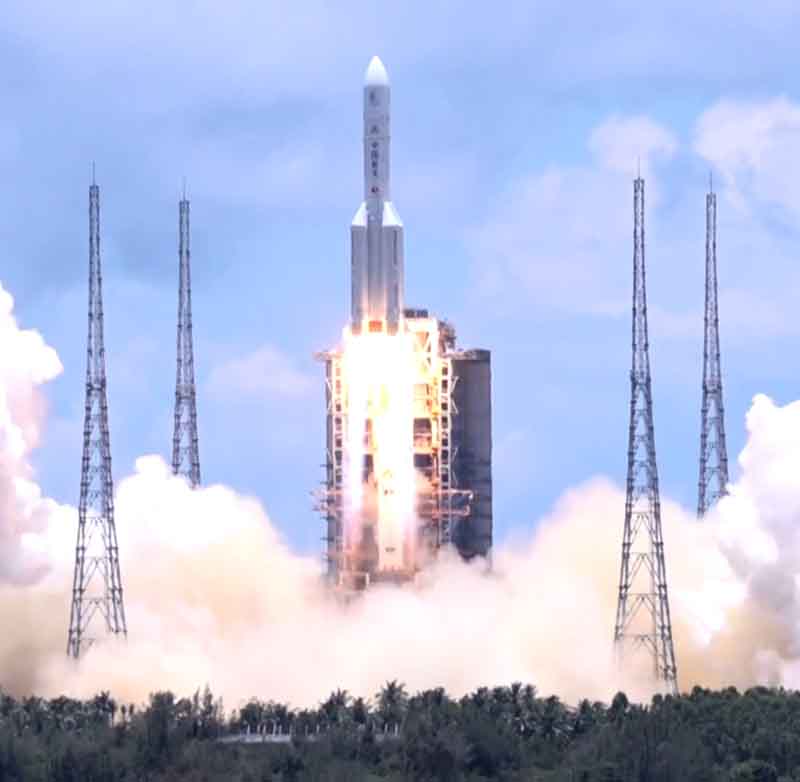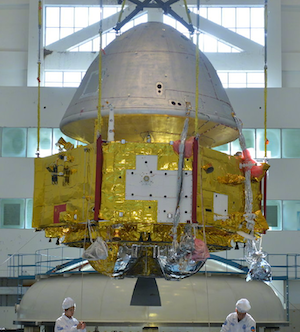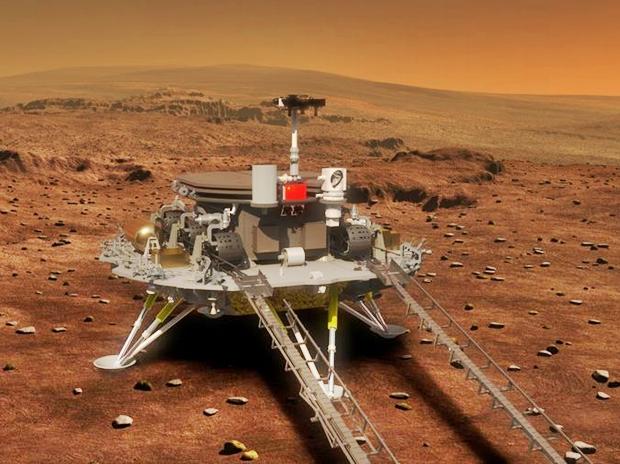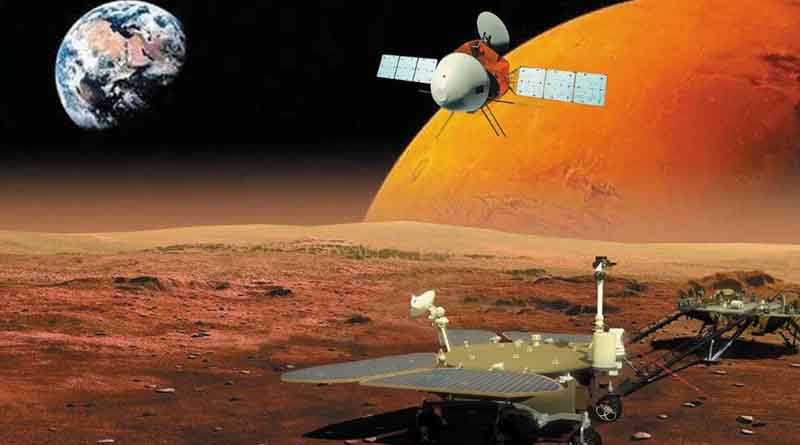July 23rd 2020, a Long March 5 heavy-lift rocket successfully launched from the Wenchang, Hainan Spacecraft Launch Site and is currently en route to Mars, it has already travelled about 3 million kilometres to date.
The Long March-5 rocket, China’s largest launch vehicle so far is carrying a spacecraft with a mass of about five tonnes.

The interplanetary mission to Mars involves three robotic explorers, an orbiter, a lander and a rover designed and built by the Chinese space agency.
The mission is known as Tianwen-1.
The name “Tianwen” (simplified Chinese: 天问; ‘heavenly questions’) comes from the long poem of the same name written by Qu Yuan (about 340–278 BC), regarded as one of the greatest poets of Ancient China.

It is a poem of a series of questions starting with how the universe was created.

Tianwen-1 carried out its first mid-course correction on August 2, 2020 and will make two more course corrections and a deep-space manoeuvre as it makes its way to the red planet over the next seven months.
The spacecraft has already begun to conduct scientific operations with the Mars Energetic Particle Analyser, mounted on the orbiter, which has already transmitted data back to ground control.
The scientific objectives of Tianwen-1
Its stated objectives are to search for evidence of both current and past life, and to assess the planet’s environment.
1) Create a geological map of Mars.
2) Explore the characteristics of the Martian soil and locate potential deposits of water and ice.
3) Analyse the material composition of the surface.
4) Investigate the Martian atmosphere and weather on the surface and,
5) Understand the electromagnetic and gravitational fields of the planet.

The orbiter is equipped with seven instruments. It has two cameras, an underground penetrating radar, a spectrometer to reveal the mineral composition of the surface, and instruments to analyse charged particles in the Martian atmosphere.

The rover, which has twice the mass of China’s Yutu-2 lunar rover by weighing 240 kilograms, has six instruments and also includes two cameras, as well as a radar and three detectors that can be used to study soil composition and the magnetic fields of Mars.
The landing site for the rover has been the subject of speculation, but an article in Nature confirms that it will be somewhere in Utopia Planitia, a vast plain in the northern latitudes of Mars and the same place where NASA’s Viking 2 mission landed in the 1970s.
The date the rover is expected to land is about two or three months after Tianwen-1 reaches Martian orbit, so if everything goes as planned, it could be April or May 2021.
Tianwen-1 was the second of three space missions sent toward Mars during the July 2020 Mars launch window, with missions also launched by the national space agencies of the United Arab Emirates (Hope orbiter) and the United States (Mars 2020, with an orbiter, lander, and rover). All three are expected to arrive at Mars in February 2021.
Source: The Chinese Space Agency
Related article: Everything you wanted to know about the Chinese calendar but were too confused to ask
Tropicalhainan.com launched it’s official mini programme and WeChat account, scan the Qr code to keep up to date with news, sports, entertainment, travel, opinion and more.







